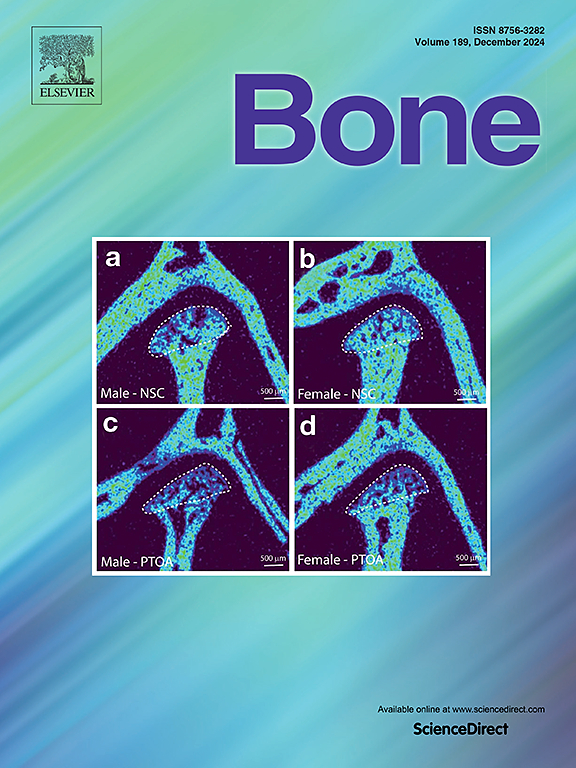An analysis of 12 major fracture subtypes in adolescents and young adults: Global trends and population projections from GBD 2021
IF 3.5
2区 医学
Q2 ENDOCRINOLOGY & METABOLISM
引用次数: 0
Abstract
Background
Fractures represent a significant global public health concern, particularly affecting younger and older populations; however, there is a notable lack of comprehensive epidemiological research focusing on fracture among adolescents and young adults (AYAs).
Methods
We assessed the fracture burden in AYAs using GBD 2021 data. Concentration curves and indices were used to evaluate socioeconomic inequalities. Trends and projections were estimated using Bayesian age-period-cohort (BAPC) models.
Results
In 2021, the global incidence of fractures among AYAs reached 40.77 million cases, corresponding to an age-standardized incidence rate (ASR) of 2156 per 100,000 population. Compared to all ages, AYAs showed a higher proportion of Fracture of hand (wrist and other distal part of hand) and Fracture of foot bones except ankle (Hand/Wrist Fx and Foot Fx), while Fracture of hip and Fracture of femur, other than femoral neck (Hip Fx and Femur Shaft Fx) were less frequent but contributed disproportionately to disability. Fracture of patella, tibia or fibula, or ankle (Lower Leg Fx) ranked first in all indicators, contributing over 70 % of Years lived with disability (YLDs) in some regions. Fracture of radius and/or ulna (Forearm Fx) ranked second in incidence but had limited YLDs impact. Fracture of pelvis (Pelvic Fx) caused substantial disability despite lower frequency. Girls aged 10–14 were the only group projected to experience a rising burden.
Conclusions
Despite an overall decline since 1990, the fracture burden in AYAs remains significant, particularly in high-SDI and conflict regions. Distinct fracture patterns in AYAs highlight the need for age-specific prevention strategies focusing on high-incidence and high-disability subtypes.

青少年和年轻人的12种主要骨折亚型分析:全球趋势和2021年GBD的人口预测
背景:骨折是一个重要的全球公共卫生问题,尤其影响到年轻人和老年人;然而,青少年和青壮年(AYAs)骨折的综合流行病学研究明显缺乏。方法:我们使用gbd2021数据评估AYAs的骨折负荷。浓度曲线和指数用于评价社会经济不平等。使用贝叶斯年龄-时期-队列(BAPC)模型估计趋势和预测。结果:2021年,全球青少年骨折发生率达到4077万例,对应年龄标准化发病率(ASR)为每10万人2156例。与所有年龄段相比,AYAs中手部骨折(手腕及其他远端部位)和除踝关节外的足部骨折(手/手腕Fx和足部Fx)的比例较高,而髋部骨折和股骨颈以外的骨折(髋关节Fx和股骨轴Fx)的发生率较低,但对残疾的贡献不成比例。髌骨、胫骨或腓骨或踝关节骨折(下肢Fx)在所有指标中排名第一,在某些地区占残疾生活年(YLDs)的70% %以上。桡骨和/或尺骨骨折(前臂Fx)的发生率排名第二,但对YLDs的影响有限。骨盆骨折(骨盆Fx)尽管频率较低,但仍造成严重的残疾。10-14岁的女孩是唯一一个预计负担会增加的群体。结论:尽管自1990年以来总体上有所下降,但AYAs的骨折负担仍然很大,特别是在高sdi和冲突地区。aya中不同的骨折模式突出了针对不同年龄的预防策略的必要性,重点关注高发病率和高致残率亚型。
本文章由计算机程序翻译,如有差异,请以英文原文为准。
求助全文
约1分钟内获得全文
求助全文
来源期刊

Bone
医学-内分泌学与代谢
CiteScore
8.90
自引率
4.90%
发文量
264
审稿时长
30 days
期刊介绍:
BONE is an interdisciplinary forum for the rapid publication of original articles and reviews on basic, translational, and clinical aspects of bone and mineral metabolism. The Journal also encourages submissions related to interactions of bone with other organ systems, including cartilage, endocrine, muscle, fat, neural, vascular, gastrointestinal, hematopoietic, and immune systems. Particular attention is placed on the application of experimental studies to clinical practice.
 求助内容:
求助内容: 应助结果提醒方式:
应助结果提醒方式:


